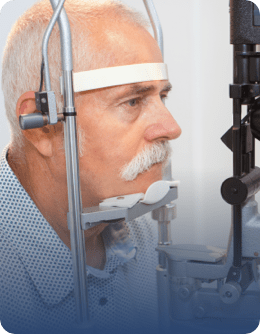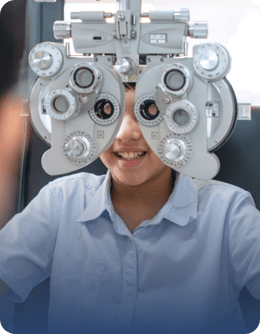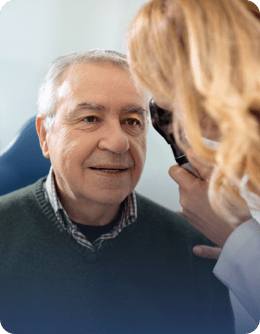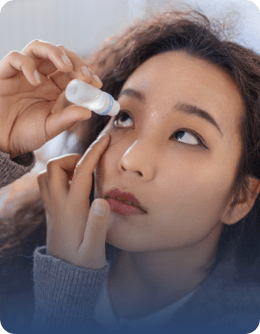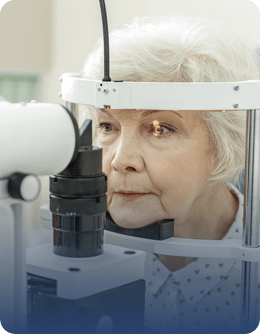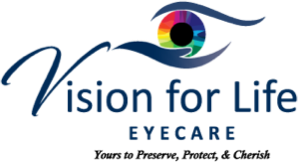Dry eyes can feel like a nuisance, disrupting work, fun, and daily life. Dry eye can also cause blurry or fluctuating vision. While seeing things out of focus is temporary, severe dry eye can lead to changes to eye health that can impact long-term vision.
Fortunately, if you struggle with dry eye, blurry vision, or strained eyes, your eye doctor can help.
What Is Dry Eye Syndrome?
Dry eye syndrome occurs when your eyes don’t produce enough tears or when the composition of your tears can’t properly lubricate your eyes.
Tears do more than keep your eyes moist; your tears play a vital role in removing debris and creating a smooth optical surface to support clear vision.
Common symptoms of dry eye include:
- Blurry vision
- Persistent dryness or grittiness
- Burning or stinging sensation
- Redness in the whites of the eyes
- Watery eyes caused by reflex tearing
- Light sensitivity
Among all these symptoms, blurry vision can make everyday tasks like driving or reading particularly challenging.
How Does Dry Eye Syndrome Cause Blurry Vision?
Dry eyes and blurry vision are closely linked because tears play a critical role in maintaining the eye’s optical surface. Take a closer look at how dry eye syndrome can lead to blurry vision.
1. Disrupted Tear Film
Your tears are made up of 3 layers—oil, water, and mucus—working together to form a stable tear film across your eye. The tear film creates a smooth surface for light to pass through and supports clear, sharp vision.
When the tear film becomes uneven due to dry eye syndrome, light scatters instead of focusing properly, leading to blurry or inconsistent vision.
2. Damage to the Cornea
Chronic dryness can cause micro-abrasions or damage to the cornea, the clear, dome-shaped surface at the front of your eyes. These small injuries can distort how light enters the eye, ultimately interfering with your vision.
3. Ongoing Inflammation
Inflammation caused by dry eye syndrome can irritate and swell the eye’s surface. Over time, inflammation can exacerbate vision issues, making blurry vision more persistent and severe.
4. Reflex Tearing
Dry eyes can sometimes cause excessive tearing as your body tries to overcompensate for the dryness. Unfortunately, these reflex tears lack the proper balance of nutrients and oils required for effective lubrication, meaning they don’t contribute to clear or stable vision.
What Causes Dry Eye?
Pinpointing the cause of your dry eye can help determine an effective treatment strategy. For many people, symptoms are typically the result of a combination of factors.
1. Lifestyle Habits
Certain day-to-day activities and environmental conditions can increase your risk of dry eyes.
- Prolonged screen time reduces your blink rate, leaving your eyes dry
- Exposure to low-humidity environments, such as air-conditioned or windy spaces, can worsen symptoms
- Smoking or exposure to pollution can irritate the eyes & disrupts tear film quality
2. Aging
Tear production naturally decreases as you age, making dry eye syndrome more common among older adults.
3. Medical Conditions & Medications
Systemic conditions like diabetes, rheumatoid arthritis, and thyroid disorders are often linked to dry eye symptoms. Similarly, medications such as antihistamines, antidepressants, and diuretics can reduce tear production as a side effect.
4. Contact Lens Wear
Soft contact lenses absorb water to stay flexible—including the eye’s surface moisture. Long-term use of contact lenses can disrupt the natural tear film, contributing to chronic dryness.
5. Hormonal Changes
Hormonal shifts during pregnancy, menopause, or when using hormonal contraceptives can impact tear production and cause dryness.
Treating Dry Eyes & Blurry Vision
The good news is that dry eyes and related symptoms like blurry vision are often highly treatable. A tailored approach can significantly enhance your comfort and restore clarity.

1. Artificial Tears
Over-the-counter artificial tears can provide quick relief by replenishing moisture in the eyes. Opt for preservative-free versions if you use them frequently. Your eye care provider may prescribe treatments like Restasis for dry eye relief in severe cases.
2. Lifestyle Adjustments
Small changes to your daily routine can make a big difference in managing dry eye syndrome:
- Take regular breaks during screen time to rest your eyes & encourage blinking
- Consider using a humidifier in your home or workplace to combat dryness in the air
- Wear sunglasses outdoors to protect your eyes from wind & UV rays
- Stay hydrated & add omega-3 fatty acids to your diet to boost tear production
4. Punctual Plugs
Punctal plugs are a common and minimally invasive solution. These tiny, medical-grade plugs are inserted into your tear ducts to slow down tear drainage, allowing your eyes to maintain moisture for longer. The procedure is quick and often provides noticeable relief.
5. Meibomian Gland Care
For more severe cases of dry eye, clinical treatments can help clear blocked meibomian glands to promote healthier tear production. Meibomian gland expression is a gentle procedure to unclog and stimulate these glands, allowing for improved tear quality and stability.
Modern, energy-based treatments like intense-pulsed light (IPL) therapy and radiofrequency treatments can target the tear glands to help improve tear production.
When to Seek Professional Health
Occasional dryness—especially after extended screen time—isn’t always a cause for concern. However, persistent symptoms are a sign that it’s time to consult an eye care professional.
Blurry vision can signal worsening inflammation or damage to the eye’s surface, which, if left untreated, may lead to more serious complications. At Vision For Life Eyecare, we’re here to help you preserve and protect your vision. Book an eye exam today to get help treating your dry eye.



